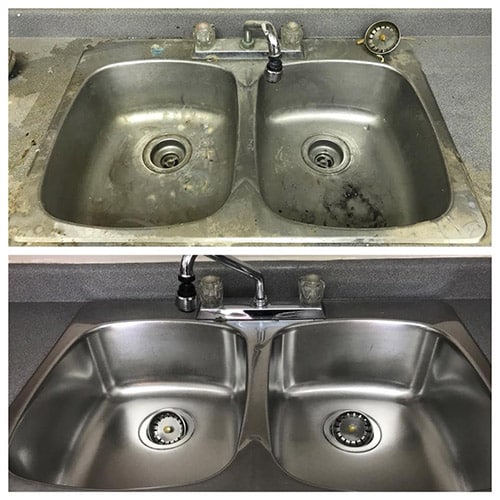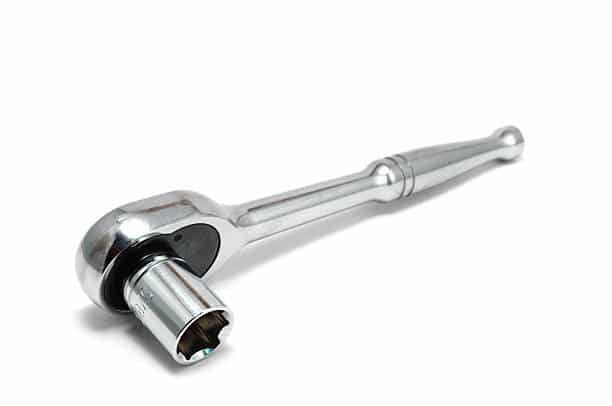Imagine stepping into a crystal-clear pool on a scorching summer day, the water cool and inviting. Now, picture the disappointment when you dip your toes and find the water uncomfortably acidic. Maintaining the pH balance in your pool is crucial for both the pool’s longevity and the well-being of its swimmers.
In this comprehensive guide, we will look into the reasons behind low pH levels, explore the importance of maintaining the right pH balance, and provide practical steps on how to increase pH in your pool effectively.
Table of contents
- What is pH and Why is it Important in a Swimming Pool?
- What are the Signs of a low pH in a Pool?
- Practical Steps to Increase pH in a Pool
- What are the Preventative Measures for pH Maintenance?
- Safety Tips When Increasing pH in a Swimming Pool
- When Do I Call a Professional?
- FAQs on How to Increase PH in Pool
- Conclusion
- References
- Recommendations
What is pH and Why is it Important in a Swimming Pool?
pH is a measure of the acidity or alkalinity of a solution on a scale of 0 to 14. A pH of 7 is considered neutral, while values below 7 show acidity and values above 7 show alkalinity. The ideal pH range for pool water is between 7.2 and 7.8.
Maintaining the proper pH level in swimming pools is crucial for various reasons, impacting both the comfort of swimmers and the overall health of the pool environment. Here’s why pH is so important in swimming pools:
Swimmer Comfort
The human body has a natural pH level, and when the pool water’s pH strays too far from this range, it can lead to discomfort for swimmers. Low pH levels can cause skin irritation, red eyes, and even exacerbate existing skin conditions.
Chemical Effectiveness
- Chlorine Efficiency: Chlorine is a common pool sanitizer used to eliminate bacteria and other contaminants. However, its effectiveness is highly dependent on the pH level of the water. If the pH is too low (acidic), chlorine becomes more potent but dissipates rapidly. On the other hand, if the pH is too high (alkaline), the sanitizing power of chlorine diminishes.
- Other Pool Chemicals: pH levels also affect the performance of other pool chemicals. Balancers, algaecides, and clarifiers work optimally within a specific pH range. Failure to maintain the correct pH can result in these chemicals being less effective, leading to water quality issues.
Equipment Longevity
Pool equipment, including pumps, filters, heaters, and metal components, are designed to operate within a certain pH range. Deviating from this range, especially towards the acidic end, can accelerate corrosion and damage the equipment. This can lead to frequent repairs or premature replacements, incurring significant costs.
- Swimmer Comfort: Water with an improper pH can cause discomfort to swimmers, leading to skin and eye irritation. The right pH ensures a pleasant swimming experience.
- Equipment Longevity: Pumps, filters, and other pool equipment are designed to operate optimally within a certain pH range. Deviating from this range can lead to corrosion and damage, reducing the lifespan of your equipment.
Pool Finish Protection
The finish of your pool, whether it is vinyl, concrete, or plaster, can also be damaged by water that is too acidic or alkaline. When the pH is too low, acidic water can erode the pool finish. When the pH is too high, scale buildup can occur on the pool finish, making it look dull and discolored.
Read: How to Remove Laminate Flooring | Full Guide with Photos
What are the Signs of a low pH in a Pool?
It is impossible to fix the low pH in a pool without identifying the signs of low pH. Hence, the common indicators include:
- Skin and Eye Irritation: If swimmers complain of red eyes, itchy skin, or irritated mucous membranes, low pH could be the culprit.
- Corroded Equipment: Check your pool equipment for signs of corrosion. Low pH can accelerate the deterioration of metal components, leading to costly repairs or replacements.
- Algae Growth: While algae can thrive in a variety of conditions, low pH levels create an environment conducive to algae proliferation.
Practical Steps to Increase pH in a Pool
Having understood the significance of pH in pool maintenance, let’s explore practical steps to increase pH levels effectively.
Step 1: Test the Current pH Level
Before making any adjustments, use a reliable pH testing kit to determine the current pH level of your pool water. This baseline measurement will guide your corrective actions.
Step 2: Add Baking Soda (Sodium Bicarbonate)
Baking soda is a commonly used household item that can serve as an effective pH increaser. It is essential to add baking soda gradually, allowing time for the water to circulate and the pH to stabilize. Be cautious not to overcompensate, as this can lead to a pH level that is too high.
Step 3: Use Soda Ash (Sodium Carbonate)
Soda ash, also known as sodium carbonate, is another pH-raising option. It is particularly useful when a more immediate increase is required. Like baking soda, add soda ash in small increments, retesting the pH after each addition.
Step 4: Increase Aeration
Aeration involves increasing the exposure of pool water to air, which can help raise pH levels. This can be achieved by adjusting your pool’s water features, such as fountains or waterfalls, to promote air-water interaction.
Step 5: Monitor and Adjust Alkalinity
Total alkalinity acts as a buffer for pH, preventing rapid fluctuations. If your pool’s alkalinity is too low, it can contribute to pH instability. Use an alkalinity increaser, such as sodium bicarbonate, to bring total alkalinity within the recommended range (typically 80-120 ppm).
Also, see this: How Do Motion-Sensing Lights And Burglar Alarms Work?
What are the Preventative Measures for pH Maintenance?
Maintaining an optimal pH level is an ongoing process. Consider adopting the following preventative measures to ensure long-term pH stability:
- Regular Testing: Schedule regular pH tests to catch any fluctuations early on. This proactive approach allows for timely adjustments before any issues escalate.
- Proper Chlorine Use: Use stabilized chlorine products to prevent rapid pH changes. Stabilized chlorine contains cyanuric acid, which helps maintain chlorine effectiveness without adversely affecting pH levels.
- Consistent Filtration: Ensure your pool filtration system is operating efficiently. Clean or replace filters regularly to promote optimal water circulation and filtration.
- Limit pH-Lowering Activities: Be mindful of activities that can lower pH, such as the addition of acidic substances or heavy rainfall. Take precautions to counteract these influences promptly.
Safety Tips When Increasing pH in a Swimming Pool
Here are some safety tips when raising the pH in your swimming pool:
- Wear protective gear: Always wear gloves, eye protection, and long pants when handling pool chemicals. This will help to protect your skin and eyes from irritation.
- Read and follow the instructions carefully: Before adding any chemicals to your pool, be sure to read and follow the instructions carefully. This will help to ensure that you are using the correct amount of chemicals and that you are adding them safely.
- Add chemicals slowly: When adding chemicals to your pool, do so slowly and evenly. This will help to prevent the chemicals from clumping together and causing problems.
- Don’t mix chemicals: Never mix different pool chemicals together. This can create dangerous fumes or explosions.
- Keep chemicals out of reach of children and pets: Store pool chemicals in a locked cabinet or shed, out of reach of children and pets.
- Wash your hands thoroughly after handling chemicals: After handling pool chemicals, be sure to wash your hands thoroughly with soap and water.
- Don’t swim in the pool immediately after adding chemicals: Wait at least 24 hours after adding chemicals to your pool before swimming in it. This will give the chemicals time to dissolve and work properly.
- Dispose of empty containers properly: Never pour pool chemicals down the drain. Instead, dispose of empty containers according to local regulations.
When Do I Call a Professional?
While you can raise the pH level of your pool yourself, there are some situations in which it is best to call a professional. Here are some signs that you should call a pool professional:
- You are unsure of how to raise the pH level of your pool: If you are new to pool ownership or are not comfortable handling pool chemicals, it is best to call a professional. They will be able to safely and effectively raise the pH level of your pool.
- The pH level of your pool is very low (below 6.8): If the pH level of your pool is very low, it is a sign that there may be a more serious problem with your pool. A professional will be able to identify the cause of the low pH level and recommend a solution.
- You have tried to raise the pH level of your pool yourself, but it has not been successful: If you have tried to raise the pH level of your pool yourself, but it has not been successful, it is a sign that there may be an underlying problem. A professional will be able to troubleshoot the problem and get your pool’s pH level back into the proper range.
- You have a large or complex pool: If you have a large or complex pool, it may be more difficult to raise the pH level yourself. A professional will have the experience and equipment to handle a large or complex pool.
- You have concerns about the safety of handling pool chemicals: If you are concerned about the safety of handling pool chemicals, it is best to call a professional. They will be able to handle the chemicals safely and effectively.
:
FAQs on How to Increase PH in Pool
There are two main ways to test the pH level of your pool:
1. Liquid test kits: These kits use color-changing drops to indicate the pH level of your pool water.
2. Test strips: These strips are dipped into your pool water and will change color to indicate the pH level.
You should test the pH level of your pool at least once a week. This will help you to ensure that the pH level is within the ideal range.
Some of the signs of high pH in pool water include:
1. Cloudy water
2. Scale buildup on pool equipment
3. Skin irritation
4. Eye irritation
If the pH level of your pool is too high, you can lower it by adding muriatic acid to your pool.
Conclusion
Achieving the perfect balance of pH in your pool is not only essential for the well-being of swimmers but also for the longevity of your pool infrastructure. By following these practical steps and adopting preventative measures, you can effectively increase and maintain the pH levels in your pool.
Remember, a well-balanced pool is a joy to swim in and a testament to your commitment to pool maintenance. Dive in and enjoy the crystal-clear waters of a perfectly pH-balanced pool!





